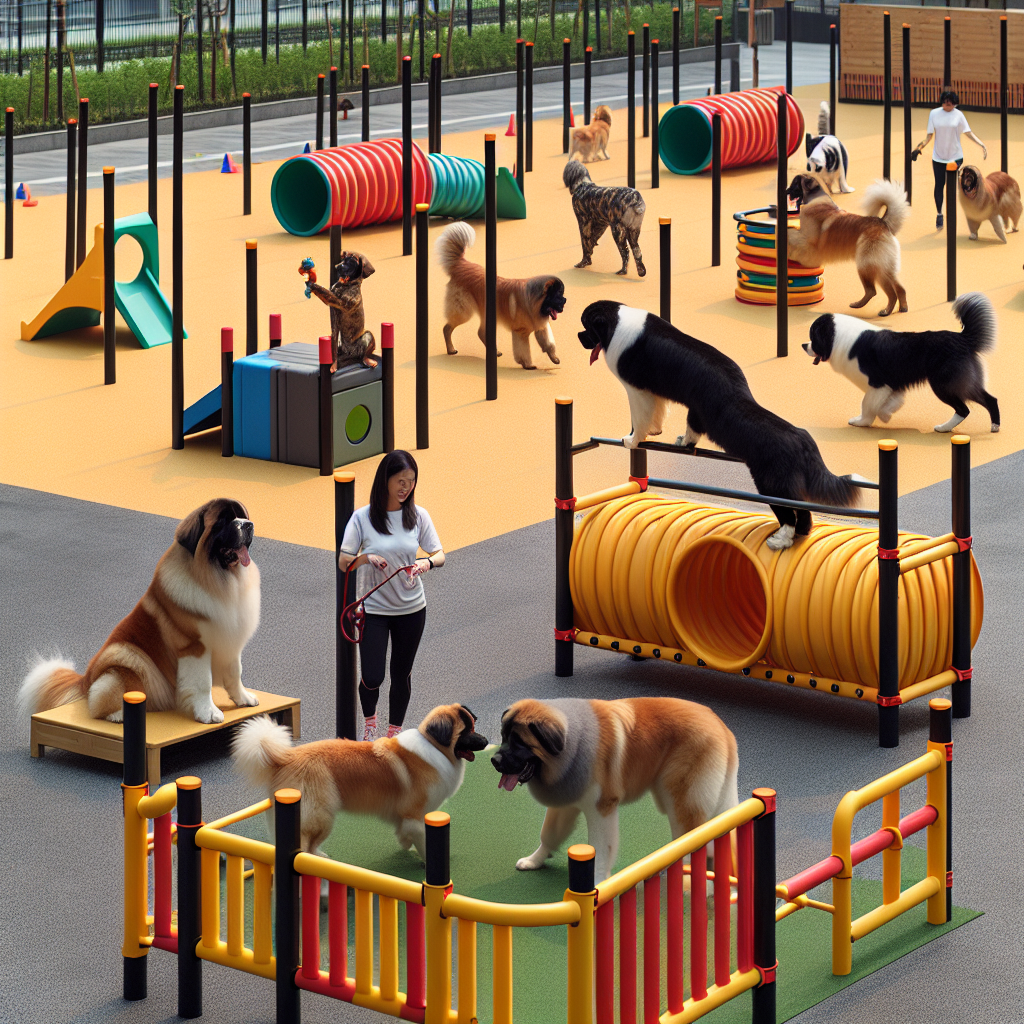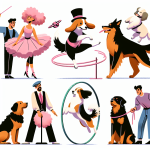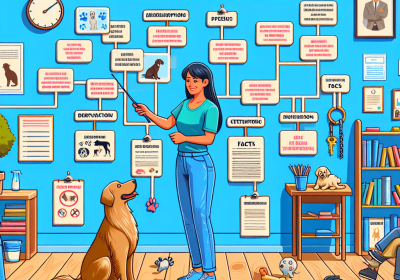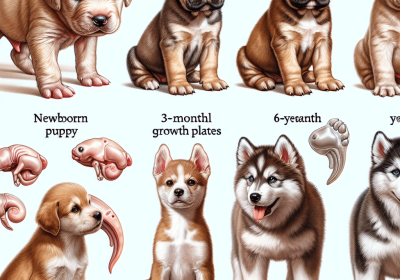Canine Freework for Large Breeds
Table of Contents
- Benefits Of Canine Freework For Large Breeds
- Essential Equipment For Canine Freework With Large Dogs
- Training Tips For Successful Canine Freework Sessions With Large Breeds
Canine Freework for large breeds is a specialized training and enrichment approach designed to cater to the unique physical and mental needs of larger dogs. This method emphasizes natural, instinctual behaviors, allowing dogs to engage in activities that stimulate their senses and promote overall well-being. By incorporating elements such as scent work, problem-solving tasks, and physical exercises, Canine Freework helps large breeds develop confidence, reduce stress, and enhance their bond with their handlers. This holistic approach not only addresses the specific challenges faced by larger dogs but also fosters a more balanced and fulfilling life for them.
Benefits Of Canine Freework For Large Breeds
Canine Freework, an innovative approach to dog training and enrichment, offers numerous benefits, particularly for large breeds. This method emphasizes allowing dogs to explore their environment freely, engaging their senses and instincts in a controlled yet unstructured manner. By understanding the unique advantages of Canine Freework for large breeds, owners can better cater to their pets’ physical and mental well-being.
One of the primary benefits of Canine Freework for large breeds is the promotion of physical health. Large dogs often require more exercise and physical activity than their smaller counterparts to maintain optimal health. Traditional exercise routines, such as walking or running, may not always provide the variety and stimulation these dogs need. Canine Freework introduces diverse activities that encourage natural movements, such as climbing, balancing, and navigating different surfaces. These activities not only help to build muscle strength and improve coordination but also reduce the risk of obesity and related health issues.
In addition to physical health, Canine Freework significantly enhances mental stimulation. Large breeds are often highly intelligent and can become bored with repetitive tasks. This boredom can lead to undesirable behaviors such as chewing, digging, or excessive barking. By incorporating Canine Freework into their routine, owners can provide their dogs with a mentally enriching environment. The varied and unpredictable nature of Freework activities keeps dogs engaged and mentally challenged, which can help to alleviate boredom and reduce the likelihood of destructive behaviors.
Moreover, Canine Freework fosters a stronger bond between dogs and their owners. The collaborative nature of this approach requires owners to be actively involved in their dogs’ activities, observing and guiding them as they explore. This interaction not only strengthens the human-animal bond but also enhances communication and trust. As owners become more attuned to their dogs’ behaviors and preferences, they can better understand and meet their pets’ needs, leading to a more harmonious relationship.
Another notable benefit of Canine Freework is its positive impact on a dog’s confidence and emotional well-being. Large breeds can sometimes be prone to anxiety or fearfulness, particularly in unfamiliar environments or situations. Canine Freework encourages dogs to explore and interact with their surroundings at their own pace, which can help to build confidence and reduce anxiety. By successfully navigating new challenges and environments, dogs develop a sense of accomplishment and self-assurance. This increased confidence can translate to other areas of their lives, making them more adaptable and resilient.
Furthermore, Canine Freework can be particularly beneficial for large breeds with specific behavioral issues. For instance, dogs that exhibit reactivity or aggression may benefit from the controlled exposure to various stimuli that Freework provides. By gradually introducing these dogs to new experiences in a positive and supportive manner, owners can help to desensitize them and reduce reactive behaviors. This approach can be more effective and less stressful than traditional training methods, which often rely on correction and discipline.
In conclusion, Canine Freework offers a multitude of benefits for large breeds, encompassing physical health, mental stimulation, emotional well-being, and behavioral improvement. By incorporating this approach into their dogs’ routines, owners can provide a more enriching and fulfilling life for their pets. The emphasis on natural movements, mental engagement, and positive experiences makes Canine Freework an invaluable tool for enhancing the overall quality of life for large breed dogs.
Essential Equipment For Canine Freework With Large Dogs

Canine freework, a versatile and enriching activity for dogs, has gained popularity among pet owners and trainers alike. This practice, which involves allowing dogs to explore and interact with their environment freely, can be particularly beneficial for large breeds. However, to ensure the safety and effectiveness of canine freework, it is essential to have the right equipment. This article will discuss the necessary tools and gear for engaging in canine freework with large dogs, providing a comprehensive guide for those looking to enhance their pet’s physical and mental well-being.
First and foremost, a sturdy and well-fitted harness is crucial for large breeds participating in canine freework. Unlike collars, harnesses distribute pressure evenly across the dog’s body, reducing the risk of injury to the neck and spine. When selecting a harness, it is important to choose one that is specifically designed for large dogs, as these will offer the necessary support and durability. Additionally, adjustable straps and padded sections can provide extra comfort, ensuring that the dog can move freely without any restrictions.
In conjunction with a harness, a robust leash is also essential. For large breeds, a leash made from high-quality materials such as nylon or leather is recommended, as these are less likely to fray or break under pressure. A leash with a length of at least six feet allows the dog ample space to explore while still maintaining control. Furthermore, a leash with a secure clip and a comfortable handle can enhance the overall experience for both the dog and the handler.
Another important piece of equipment for canine freework with large dogs is a variety of interactive toys. These toys can stimulate the dog’s mind and encourage natural behaviors such as sniffing, digging, and chewing. Durable toys made from materials like rubber or heavy-duty plastic are ideal for large breeds, as they can withstand the powerful jaws and enthusiastic play of bigger dogs. Puzzle toys, treat-dispensing toys, and tug toys are all excellent options that can keep the dog engaged and mentally stimulated during freework sessions.
In addition to toys, incorporating sensory enrichment items can greatly enhance the canine freework experience. Items such as scent trails, textured surfaces, and auditory stimuli can provide a multi-sensory environment that encourages exploration and curiosity. For large breeds, it is important to ensure that these items are appropriately sized and durable, as smaller or fragile items may pose a choking hazard or be easily destroyed.
Moreover, a safe and secure environment is paramount when engaging in canine freework with large dogs. This may involve setting up a designated area in the backyard or using a secure, enclosed space such as a dog park. Ensuring that the area is free from hazards such as sharp objects, toxic plants, or small gaps in fencing can prevent accidents and injuries. Additionally, supervising the dog during freework sessions can help to monitor their behavior and intervene if necessary.
Lastly, it is beneficial to have a first aid kit on hand when participating in canine freework with large dogs. Accidents can happen, and being prepared with basic medical supplies such as bandages, antiseptic wipes, and tweezers can make a significant difference in addressing minor injuries promptly. Familiarizing oneself with basic first aid procedures for dogs can also be advantageous in ensuring the well-being of the pet.
In conclusion, canine freework can be a highly rewarding activity for large breeds, promoting physical exercise and mental stimulation. By equipping oneself with the essential tools and gear, such as a sturdy harness, robust leash, interactive toys, sensory enrichment items, a safe environment, and a first aid kit, pet owners can create a safe and enjoyable experience for their dogs. With the right preparation and equipment, canine freework can become a valuable part of a large dog’s routine, contributing to their overall health and happiness.
Training Tips For Successful Canine Freework Sessions With Large Breeds
Canine freework, an innovative approach to dog training, emphasizes the importance of allowing dogs to explore their environment freely, thereby enhancing their physical and mental well-being. This method is particularly beneficial for large breeds, which often require more substantial physical and mental stimulation than their smaller counterparts. To ensure successful canine freework sessions with large breeds, it is essential to consider several key training tips that can help maximize the benefits of this approach.
First and foremost, understanding the unique needs of large breeds is crucial. These dogs typically have higher energy levels and require more space to move around comfortably. Therefore, selecting an appropriate environment for freework sessions is vital. Ideally, the chosen area should be spacious, secure, and free from potential hazards. This allows the dog to explore without restrictions, promoting a sense of freedom and reducing the likelihood of stress or anxiety.
In addition to selecting a suitable environment, it is important to provide a variety of stimuli to engage the dog’s senses. Large breeds, with their keen sense of smell and heightened curiosity, benefit greatly from diverse sensory experiences. Incorporating different textures, scents, and objects into the freework area can stimulate the dog’s mind and encourage natural behaviors such as sniffing, digging, and foraging. This not only keeps the dog mentally engaged but also helps to alleviate boredom and prevent destructive behaviors.
Moreover, it is essential to monitor the dog’s behavior closely during freework sessions. Observing how the dog interacts with its environment can provide valuable insights into its preferences and needs. For instance, if a dog shows a particular interest in certain objects or activities, these can be incorporated more frequently into future sessions. Conversely, if the dog appears uncomfortable or disinterested, adjustments can be made to better suit its preferences. This individualized approach ensures that each session is tailored to the dog’s unique personality and requirements.
Another important aspect of successful canine freework sessions is the use of positive reinforcement. Rewarding the dog for desired behaviors, such as exploring new areas or interacting with different objects, can reinforce these actions and encourage further engagement. Treats, praise, and play are effective forms of positive reinforcement that can motivate the dog and create a positive association with freework activities. It is important to be consistent with rewards and to offer them immediately after the desired behavior to strengthen the connection between the action and the reward.
Furthermore, it is crucial to maintain a balance between structured activities and free exploration. While the primary focus of freework is to allow the dog to explore independently, incorporating some structured tasks can provide additional mental stimulation and reinforce training commands. For example, hiding treats or toys in different areas of the freework space can encourage the dog to use its problem-solving skills and follow scent trails. This combination of free exploration and structured activities can create a well-rounded and enriching experience for the dog.
Lastly, patience and consistency are key to successful canine freework sessions. Large breeds may take some time to adjust to this new approach, especially if they are accustomed to more traditional training methods. It is important to be patient and allow the dog to explore at its own pace, gradually increasing the complexity of the environment and activities as the dog becomes more comfortable. Consistency in the frequency and duration of freework sessions can also help establish a routine and ensure that the dog receives regular mental and physical stimulation.
In conclusion, canine freework offers numerous benefits for large breeds, provided that the sessions are conducted thoughtfully and with consideration of the dog’s unique needs. By selecting an appropriate environment, providing diverse stimuli, monitoring behavior, using positive reinforcement, balancing structured activities with free exploration, and maintaining patience and consistency, owners can create successful and enriching freework experiences for their large breed dogs.
Read more about Canine Freework
Canine Freework Activities for Different Dog Breeds
– Canine Freework for Large Breeds
– Canine Freework for Small Breeds
– Canine Freework for Working Breeds
– Canine Freework for Companion Breeds
– Canine Freework for Specialized Breeds (e.g. Herding, Hunting)






![The Dog Podcast Uncovers Startling Truths About What We Feed Our Dogs [Press Release]](https://storyforge.com.au/wp-content/uploads/2024/08/dogfood-400x280.jpg)

